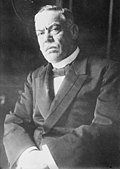1920 German federal election
| |||||||||||||||||||||||||||||||||||||||||||||||||||||||||||||||||||||||||||||||||||||||||||||
All 459 seats in the Reichstag 230 seats needed for a majority | |||||||||||||||||||||||||||||||||||||||||||||||||||||||||||||||||||||||||||||||||||||||||||||
|---|---|---|---|---|---|---|---|---|---|---|---|---|---|---|---|---|---|---|---|---|---|---|---|---|---|---|---|---|---|---|---|---|---|---|---|---|---|---|---|---|---|---|---|---|---|---|---|---|---|---|---|---|---|---|---|---|---|---|---|---|---|---|---|---|---|---|---|---|---|---|---|---|---|---|---|---|---|---|---|---|---|---|---|---|---|---|---|---|---|---|---|---|---|
| Registered | 35,949,774 | ||||||||||||||||||||||||||||||||||||||||||||||||||||||||||||||||||||||||||||||||||||||||||||
| Turnout | 28,463,581 (79.2%) | ||||||||||||||||||||||||||||||||||||||||||||||||||||||||||||||||||||||||||||||||||||||||||||
| |||||||||||||||||||||||||||||||||||||||||||||||||||||||||||||||||||||||||||||||||||||||||||||
 Winning party by electoral constituency. | |||||||||||||||||||||||||||||||||||||||||||||||||||||||||||||||||||||||||||||||||||||||||||||
| |||||||||||||||||||||||||||||||||||||||||||||||||||||||||||||||||||||||||||||||||||||||||||||
| This article is part of a series on the |
| Politics of Germany |
|---|
 |
Federal elections were held in Germany on 6 June 1920. Territorial disputes meant that voting was delayed in East Prussia and Schleswig-Holstein until 20 February 1921, and until 19 November 1922 in Oppeln.[1] The Social Democratic Party remained the largest party in the Reichstag although it lost over a third of its seats.[2] Voter turnout was about 79.2%.[3]
Electoral system
The members of the Reichstag were elected by two methods. A total of 35 multi-member constituencies were to have representatives elected via party-list proportional representation. A party was entitled to a seat via this method for every 60,000 votes they obtained in a constituency. At the second level, the 35 constituencies were combined into 17 constituency associations. A party could claim an additional seat if its vote remainder in the electoral district after distribution of seats by the first method was more than 30,000. As seats were allocated based on vote count, there was not a set number of seats in the chamber.[4]
People who were under the age of 25, incapacitated according to the Civil Code, who were under guardianship or provisional guardianship, or who had lost their civil rights of honour after a criminal court ruling were not eligible to vote.
Results
| Party | Votes | % | +/– | Seats | +/– | |
|---|---|---|---|---|---|---|
| Social Democratic Party | 6,179,991 | 21.92 | −15.94 | 103 | −62 | |
| Independent Social Democratic Party | 4,971,220 | 17.63 | +10.01 | 83 | +61 | |
| German National People's Party | 4,249,100 | 15.07 | +4.80 | 71 | +27 | |
| German People's Party | 3,919,446 | 13.90 | +9.47 | 65 | +46 | |
| Centre Party | 3,845,001 | 13.64 | −6.03 | 64 | −27 | |
| German Democratic Party | 2,333,741 | 8.28 | −10.28 | 39 | −36 | |
| Bavarian People's Party | 1,173,344 | 4.16 | New | 20 | New | |
| Communist Party of Germany | 589,454 | 2.09 | New | 4 | New | |
| German-Hanoverian Party | 319,108 | 1.13 | +0.88 | 5 | +4 | |
| Bavarian Peasants' League | 218,596 | 0.78 | −0.13 | 4 | 0 | |
| Poland Party | 89,228 | 0.32 | New | 0 | New | |
| German Economic League for City and Country | 88,800 | 0.31 | New | 0 | New | |
| Christian People's Party | 65,260 | 0.23 | New | 1 | New | |
| Polish Catholic Party of Upper Silesia | 51,437 | 0.18 | New | 0 | New | |
| Schleswig-Holstein State Party | 25,907 | 0.09 | New | 0 | New | |
| German Social Party | 22,958 | 0.08 | New | 0 | New | |
| German Middle Class Party | 21,255 | 0.08 | New | 0 | New | |
| Wendish People's Party | 8,050 | 0.03 | New | 0 | New | |
| German Socialist Party | 7,186 | 0.03 | New | 0 | New | |
| Reform Group | 6,832 | 0.02 | New | 0 | New | |
| Schleswig Club | 4,966 | 0.02 | New | 0 | New | |
| National Democratic People's Party | 4,015 | 0.01 | New | 0 | New | |
| Christian Social People's Party | 1,219 | 0.00 | New | 0 | New | |
| Independent Party | 169 | 0.00 | New | 0 | New | |
| German Economy and Labour Party | 43 | 0.00 | New | 0 | New | |
| Upper Silesian Catholic People's Party | 6 | 0.00 | New | 0 | New | |
| Total | 28,196,332 | 100.00 | – | 459 | +36 | |
| Valid votes | 28,196,332 | 99.06 | ||||
| Invalid/blank votes | 267,249 | 0.94 | ||||
| Total votes | 28,463,581 | 100.00 | ||||
| Registered voters/turnout | 35,949,774 | 79.18 | ||||
| Source: Gonschior.de | ||||||
References
- ^ Nohlen, D & Stöver, P (2010) Elections in Europe: A data handbook, p762 ISBN 978-3-8329-5609-7
- ^ Nohlen & Stöver, p790
- ^ Nohlen & Stöver, p776
- ^ Aleskerov, F., Holler, M.J. & Kamalova, R. Power distribution in the Weimar Reichstag in 1919–1933. Ann Oper Res 215, 25–37 (2014). https://doi.org/10.1007/s10479-013-1325-4







